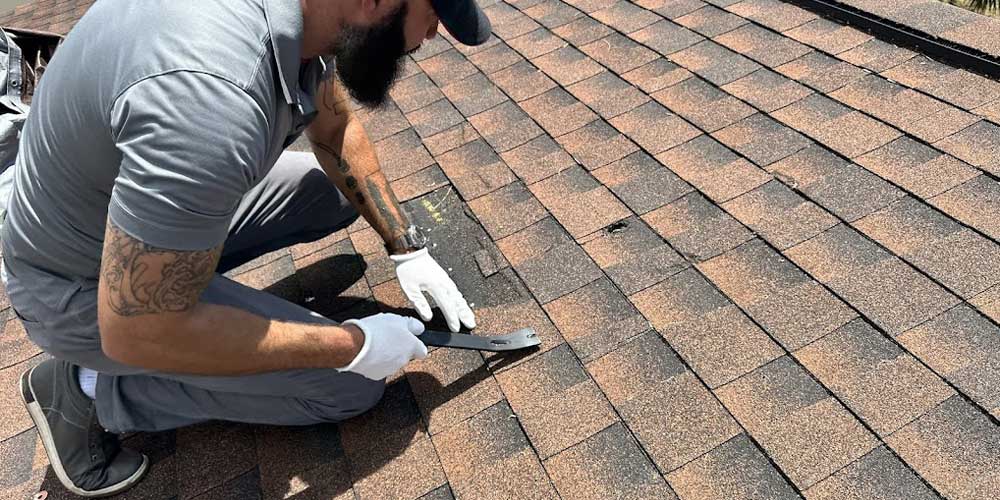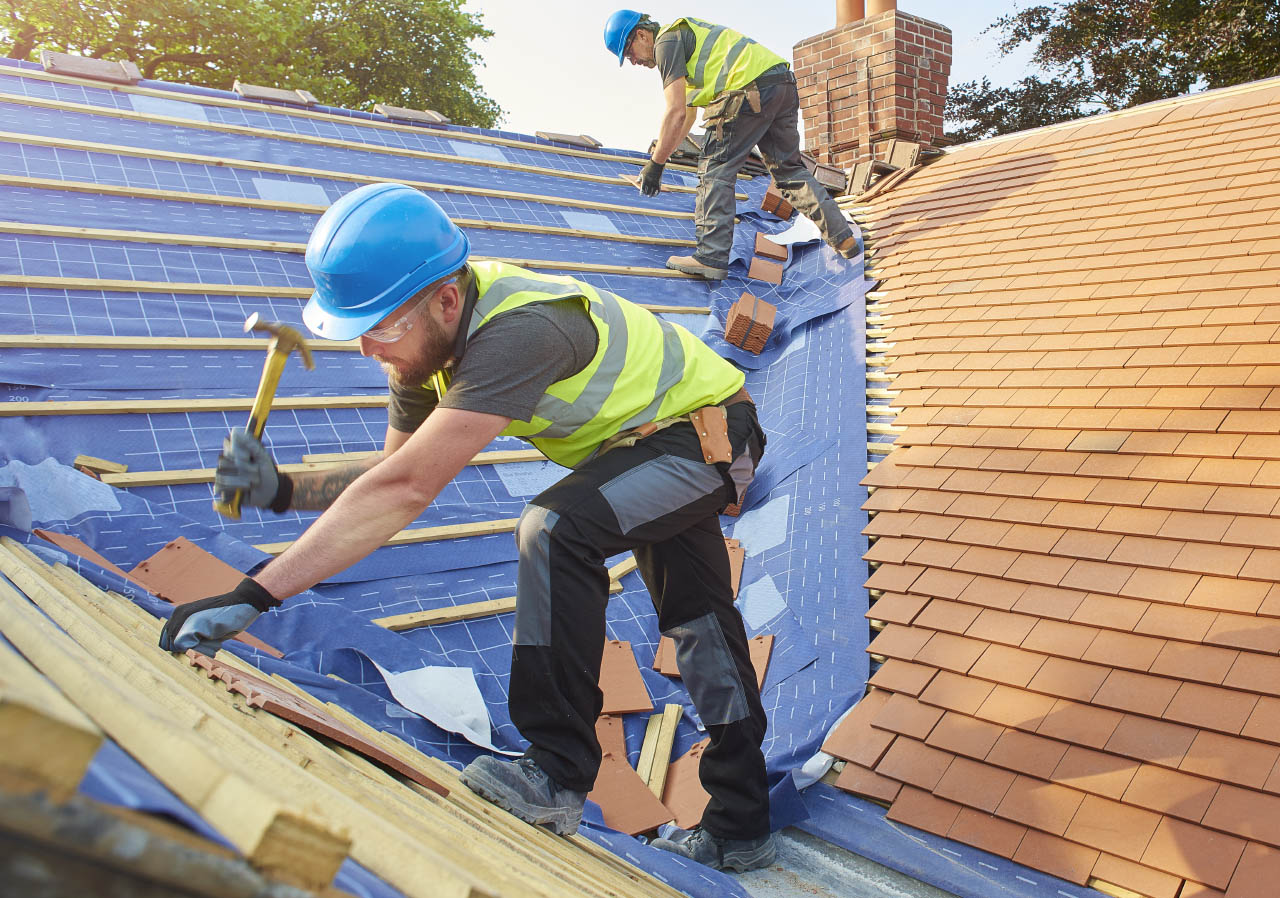Oahu Roofing: Reliable Roofing Solutions for Homes and Businesses
Oahu Roofing: Reliable Roofing Solutions for Homes and Businesses
Blog Article
Understanding the Different Sorts Of Roof Coverings: A Comprehensive Overview for Homeowners
With a range of alternatives-- varying from the traditional gable to the modern level-- each type provides unique benefits and difficulties that ought to straighten with the home owner's ecological considerations and details requirements. As we discover the details of numerous roof kinds, it comes to be obvious that one size does not fit all; the best option may stun you.
Gable Roofings
Saddleback roofs, defined by their triangular shape, are among the most preferred roof covering designs due to their simpleness and performance in dropping water and snow. This layout includes 2 sloping sides that meet at a ridge, enabling efficient water drainage and decreasing the risk of water build-up. The high pitch commonly associated with gable roof coverings enhances their capability to manage hefty rainfall, making them ideal for various climates.
Along with their practical advantages, saddleback roofs use visual versatility. They can be adjusted to various building styles, from standard to modern-day homes. The style can additionally fit extra functions such as dormer home windows, which boost all-natural light and air flow in the attic space.
Furthermore, saddleback roofs offer enough space for insulation, adding to energy effectiveness. House owners can select from a variety of roofing materials, including asphalt tiles, metal, and floor tiles, additionally improving customization choices.
Despite their advantages, gable roofing systems may require extra assistance in areas vulnerable to high winds or hefty snowfall. Overall, the saddleback roof stays a preferred choice due to its mix of performance, resilience, and aesthetic appeal.
Flat Roofs
Level roofs are typically identified for their minimalist design and sensible applications, specifically in commercial and industrial settings (oahu roofing). These roofs feature a almost horizontal or horizontal surface area, which enables very easy construction and flexible room use. While they may do not have the visual appeal of angled roofs, level roofing systems supply various benefits, specifically in metropolitan environments where making the most of room is vital
One of the key benefits of flat roof coverings is their accessibility. House owners can utilize the roof space for different objectives, such as rooftop yards, terraces, or solar panel setups. In addition, level roofs are usually more cost-efficient to install and keep contrasted to their sloped counterparts, as they require less products and labor.
Usual products utilized for flat roofing systems include built-up roofing (BUR), modified bitumen, and single-ply membranes, each offering distinctive benefits. On the whole, flat roof coverings serve as a useful and versatile choice for several property owners and organizations alike.
Hip Roofs
Hip roofs are identified by their sloped sides that merge on top, creating a ridge. This design is distinctive from gable roofing systems, as all four sides of a hip roofing system slope downwards toward the walls, supplying a much more stable structure. The angle of the slopes can differ, permitting versatility in architectural looks and capability.
Among the primary benefits of hip roofs is their ability to endure heavy winds and unfavorable weather problems. The sloped surface areas allow much better water drain, reducing the danger of leakages and water damage. Furthermore, hip roof coverings provide enhanced attic room room, which can be used for storage space or perhaps converted right into habitable locations.
Nonetheless, creating a hip roof covering can be a lot more pricey and intricate than easier roofing kinds, such as saddleback roofs. The added product and labor associated with producing the slopes and ensuring correct architectural stability can lead to higher expenditures. Despite these drawbacks, several homeowners favor hip roofings for their durability, aesthetic charm, and possibility for energy effectiveness.
Mansard Roofs
Mansard roofs, commonly identified by their one-of-a-kind four-sided design, attribute 2 inclines on each side, with the reduced incline being steeper than the top. This building design, stemming from France in the 17th century, is not only visually appealing but functional, as it check this optimizes the usable area in the upper floors of a structure. The steep lower incline permits for even more headroom, making it a suitable choice for loft spaces or attics, which can be transformed right into living rooms.
Mansard roofings are identified by their convenience, accommodating numerous building styles, from standard to modern. They can be created with various materials, including asphalt shingles, slate, or metal, giving homeowners with a variety of alternatives to suit their budgets and preferences. Additionally, the design permits the combination of dormer windows, enhancing all-natural light and air flow in the top levels.
Nonetheless, it is necessary to think about the potential downsides. Mansard roofs might require even more upkeep look what i found as a result of the intricacy of their style, and their high inclines can be testing for snow and rainfall drainage. On the whole, mansard roofings incorporate style with functionality, making them a prominent choice among home owners seeking unique architectural attributes.
Dropped Roofings
As property owners increasingly seek simplicity and capability in their building layouts, lost roofings have emerged as a prominent selection. Defined by a solitary sloping plane, a shed roofing provides a minimalist visual that matches various home designs, from contemporary to rustic.
One of the main advantages of a shed roofing system is its simple construction, which typically equates to lower labor and product expenses. This design enables reliable water drain, reducing the threat of leaks and water damages. Additionally, the upright slope gives ample area for skylights, enhancing natural light within the interior.
Dropped roofing systems likewise offer flexibility in terms of usage. They can be efficiently integrated into additions, garages, or exterior frameworks like structures and sheds. Additionally, this roof style can suit different roof products, including steel, asphalt tiles, or perhaps environment-friendly roofs, aligning with environmentally friendly campaigns.
Nonetheless, it is vital to think about regional climate conditions, as hefty snow loads might demand changes to the roofing system's angle or structure. Overall, dropped roofings offer a sensible and visually pleasing option for homeowners looking to optimize capability without jeopardizing design.
Conclusion


Gable roofing systems, defined by their triangular form, are among the most prominent roofing designs due to their simplicity and efficiency in losing water and snow. oahu roofing. The steep pitch commonly linked with gable roofs enhances their capacity to handle heavy precipitation, making them ideal for numerous click to find out more environments
While they may lack the visual appeal of pitched roofs, flat roof coverings supply countless benefits, particularly in city atmospheres where making best use of space is vital.

Report this page